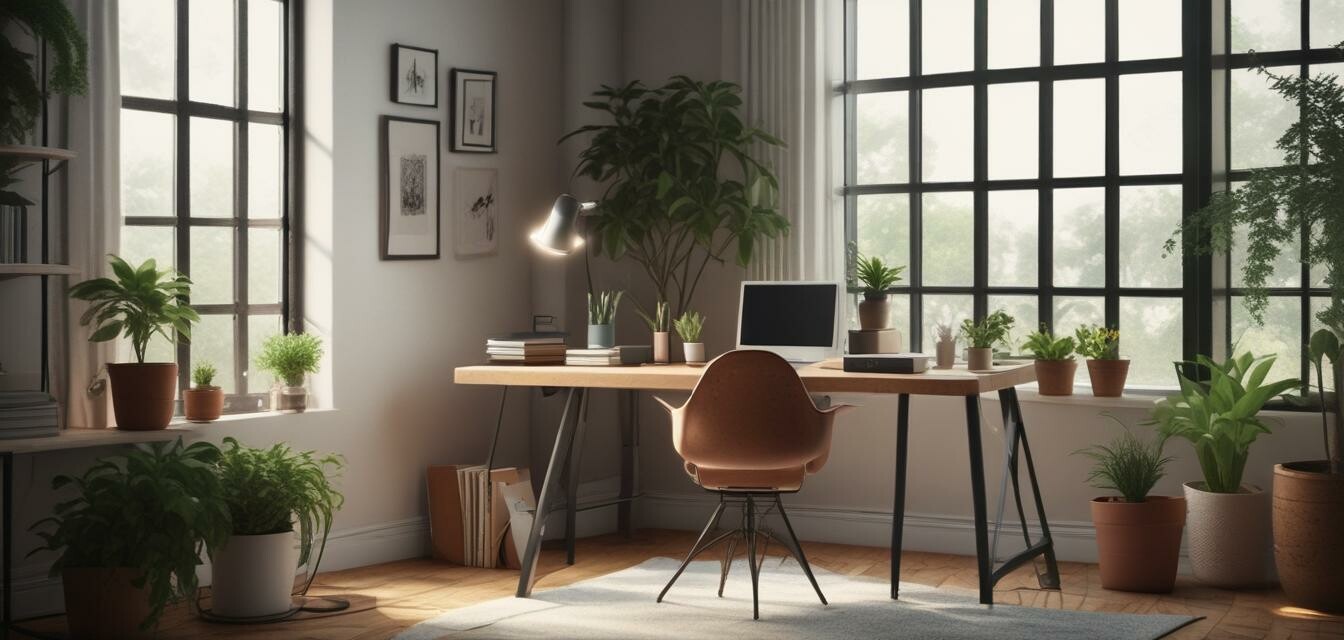
The Future of Work: Eco-Friendly Furniture Trends
Key Takeaways
- Eco-friendly furniture is becoming essential in home office setups.
- Sustainability and functionality are merging in modern designs.
- Expect the rise of natural materials, multifunctional designs, and biodegradable products.
- Incorporating greenery into workspaces enhances aesthetics and improves air quality.
- Staying informed about market trends can keep your workspace stylish and sustainable.
As we continue to navigate the evolving landscape of remote work, one pressing issue is the rise of eco-friendly furniture trends in home offices. This article analyzes how sustainability is not just a choice but a necessity in modern designs, aiming to blend functionality with environmental consciousness.
Why focus on eco-friendly furniture?
The shift towards eco-friendly furniture is driven by a growing awareness of environmental issues and the need to create sustainable workspaces. With more people working from home, it is crucial to create an environment that minimizes ecological impact while optimizing comfort and productivity.
Key features of eco-friendly furniture
- Sustainable materials: Furniture made from recycled, reclaimed, or rapidly renewable sources.
- Durability: Long-lasting designs reduce the need for frequent replacement.
- Biodegradability: Products that can break down naturally at the end of their lifecycle.
- Energy efficiency: Furniture that minimizes energy consumption, including LED lighting integrated into designs.
Trends in eco-friendly furniture
As we delve deeper into 2023 and beyond, let's explore the current trends that signify a shift towards greener office setups.
| Trend | Description |
|---|---|
| Use of natural materials | More designers are opting for materials like bamboo, cork, and reclaimed wood. |
| Multifunctional furniture | Furniture that serves multiple purposes is gaining traction—think desks that convert to standing units. |
| Minimalist designs | Simple, clean lines that promote a clutter-free workspace are preferred. |
| Integration of greenery | Incorporating plants into designs helps purify the air and enhances aesthetics. |
The benefits of eco-friendly furniture
Investing in eco-friendly furniture not only helps the environment but also provides several benefits for the individual.
Pros
- Enhances overall well-being and productivity.
- Reduces carbon footprint.
- Creates a visually appealing workspace.
- Promotes the use of ethical practices and materials.
Cons
- Often comes with a higher price tag.
- Limited options in some regions.
- Requires more research to ensure truly sustainable sources.
How to choose the right eco-friendly furniture
When selecting eco-friendly furniture for your home office, keep the following criteria in mind:
Tips
- Research the brand’s commitment to sustainability.
- Look for certifications such as Forest Stewardship Council (FSC) or LEED.
- Consider the lifecycle and durability of the product.
- Incorporate pieces that offer versatility and adaptability.
The future outlook for home office furniture
The anticipation for eco-friendly furniture trends indicates a significant shift in consumer preferences. As individuals and companies begin to prioritize sustainability, we can expect innovations in design and functionality, reflecting a growing commitment to a healthier planet.
Staying updated on trends
For more insights into the evolving landscape of home office technologies, check our News and Trends section regularly.
Conclusion
In conclusion, the future of work is undoubtedly intertwined with eco-friendly practices, particularly in furniture choices. Embracing sustainable materials, multifunctional designs, and integrating elements of nature into your workspace can enhance both productivity and comfort while benefiting the environment. Keep an eye out for these trends as they unfold and inspire your home office setup.